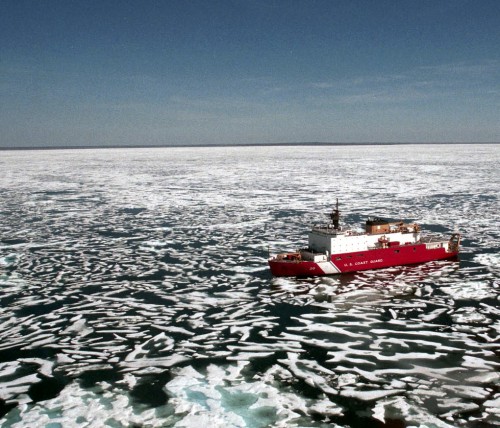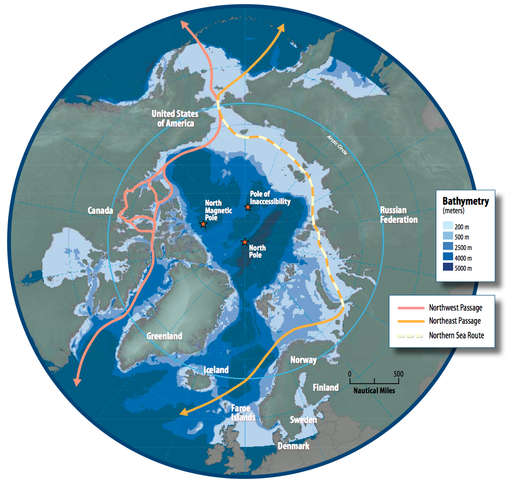
Arctic Shipping Issues Heating Up
President Obama’s visit to Alaska has focused worldwide attention on climate change and the severe impacts we are already experiencing here in Alaska. He came to witness these impacts, with visits to Seward, Dillingham, and Kotzebue, and to attend the GLACIER (Global Leadership in the Arctic: Cooperation, Innovation, Engagement, and Resilience) Conference. The President noted that collectively, the world is not doing enough to slow climate change and commented:
“I’ve come here today, as the leader of the world’s largest economy and its second largest emitter, to say that the United States recognizes our role in creating this problem, and we embrace our responsibility to help solve it. And I believe we can solve it. That’s the good news. Even if we cannot reverse the damage that we’ve already caused, we have the means—the scientific imagination and technological innovation—to avoid irreparable harm.”
Just one week before the President’s visit, there was another conference with a very different focus: The Alaskan Arctic: A Summit on Shipping and Ports, August 23-35, 2015.
 This summit was the first of several international issue forums organized by the group Arctic Circle on issues facing the Arctic. Speakers included: Governor Bill Walker; Ólafur Ragnar Grímsson, President of Iceland; Lisa Murkowski; Fran Ulmer; and Adm. Robert Papp, Jr., the United States State Department Special Representative for the Arctic. Panel topics addressed maritime shipping in the Bering Sea, ports and safety in the Bering Sea, Bering Sea coastal communities, and Arctic infrastructure finance. Also in attendance was Trustees for Alaska’s Executive Director, Vicki Clark.
This summit was the first of several international issue forums organized by the group Arctic Circle on issues facing the Arctic. Speakers included: Governor Bill Walker; Ólafur Ragnar Grímsson, President of Iceland; Lisa Murkowski; Fran Ulmer; and Adm. Robert Papp, Jr., the United States State Department Special Representative for the Arctic. Panel topics addressed maritime shipping in the Bering Sea, ports and safety in the Bering Sea, Bering Sea coastal communities, and Arctic infrastructure finance. Also in attendance was Trustees for Alaska’s Executive Director, Vicki Clark.
As polar ice recedes, the Arctic faces increased vessel traffic, which is already happening along the Northern Sea Route over Russia between Kara Gates and Pevek. The Northwest Passage over Canada saw the first ore carrier transit in 2013 and the first unescorted transit in 2014. In Alaska approximately 300 vessels per month now transit Unimak Pass, and there were approximately 350 to 500 vessels traveling through the Bering Straits in 2012-14.
This expanding vessel traffic brings with it increased risks to the safety of human life and pollution. There is little infrastructure on these routes, and as a result, no spill or emergency response within hundreds, if not thousands, of miles. International law governs much of this growing industry. The Law of the Sea Treaty, as yet unratified by the U.S., provides some governance structure for the use of the Arctic common resource area for signatory countries. The recently adopted Polar Code, a binding international code by the International Maritime Organization for shipping safety in the polar regions, will go into effect in 2017. These governing documents are a start, but there remains a lot of uncertainty for regulating these remote areas and resources. At the summit, former Alaska Lt. Gov. Mead Treadwell discussed the need for safety, security, and reliability in the Arctic, which despite rapidly increasing traffic, are not yet in place.
Mayors and leaders from the Alaska communities of Unalakleet, Wainwright, Dutch Harbor, Nome, and the Inuit Circumpolar Council relayed their openness to the opportunities commerce in expanded ports could bring, but protecting subsistence is also very important in these communities. New development could provide opportunities for rural villages to defray the high costs of energy with new infrastructure. The question that remained unaddressed at the Summit is what will be the price to subsistence, traditional ways of life, and impacts to health? Development cannot move forward without full inclusion of rural communities and protection for those communities by minimizing the impacts that will be felt directly by them. As President Obama noted, “Already [climate change is] changing the way Alaskans live. And considering the Arctic’s unique role in influencing the global climate, it will accelerate changes to the way that we all live.”

The USCG HEALY is a polar-capable icebreaker, one of three US Coast Guard ice breaking vessels. USCG Photo.
The final panel discussion focused on Arctic infrastructure finance. The investment sector, including Guggenheim and local investment bank Pt Capital, views the recent climate changes that have increased Arctic shipping to provide limitless opportunity including increased access to energy and ocean resources. The initiatives for development already involve planning for Public-Private Partnerships. These partnerships have been problematic in the past and often leave governments holding the financial losses after the private sector has obtained their profits. While the World Economic Forum is working on an Arctic Investment Protocol, an Arctic Infrastructure Inventory, and an Arctic Permanent Investment Vehicle, these efforts would not regulate activities in the Arctic and are not likely to have enforceable teeth.
A take-away message from the summit is that there is enormous pressure for development in the Arctic, both for natural resources and for increasing available infrastructure including arctic shipping. It was clear that increasing vessel traffic and financial planning for associated development are well ahead of the planning for regulatory mechanisms that will protect local communities from the impacts of the growing use and development in the Arctic. These communities are already bearing the brunt of changes from global climate change. We need to ensure that care is taken to protect a sustainable economic future for Alaskans most affected by both climate changes and the shifting economic focus on the Arctic made possible by warming ocean temperature.
Trustees for Alaska is a nonprofit public interest law firm working to protect and sustain Alaska’s natural environment on behalf of Native villages, community groups, and local and national conservation groups by providing legal services, policy advice, and strategic counsel free of charge.
Learn more about Trustees for Alaska’s climate change work.
TL;DR A conference held in Anchorage in August 2015 focused on Arctic shipping, but did not address the impacts and how they will be addressed.


